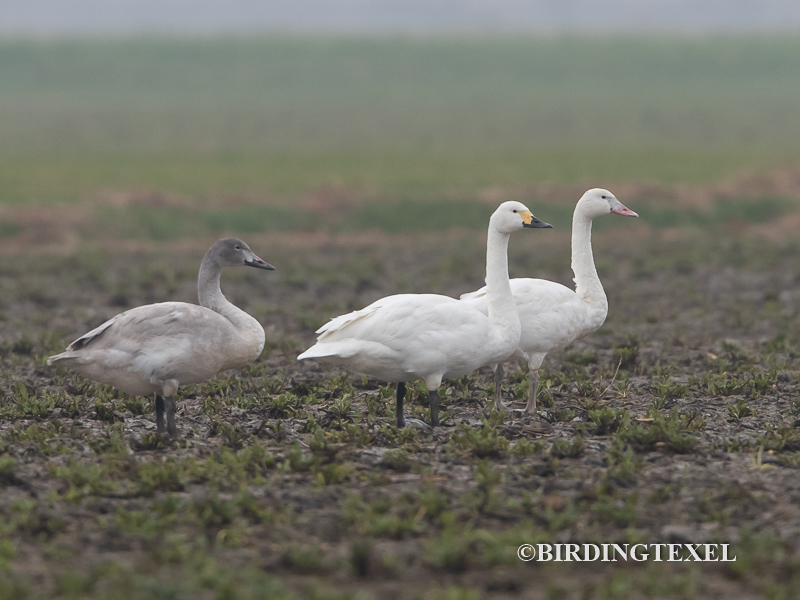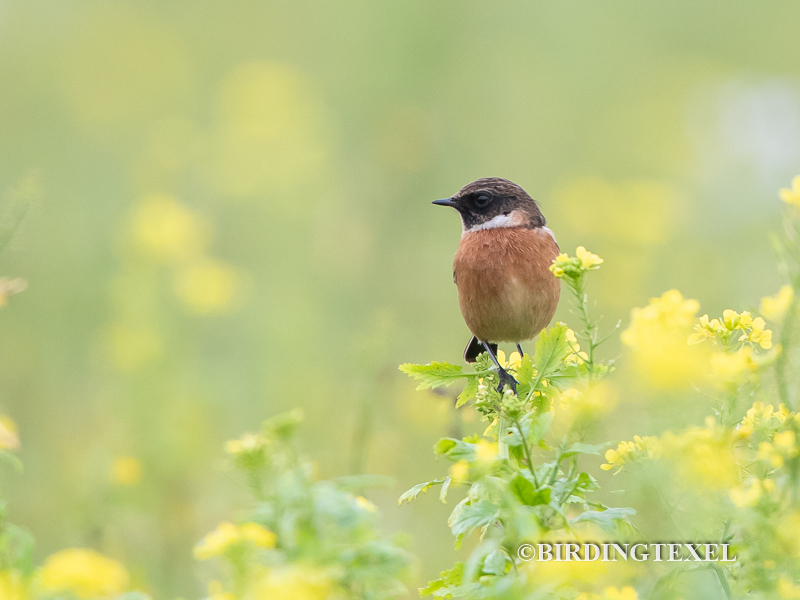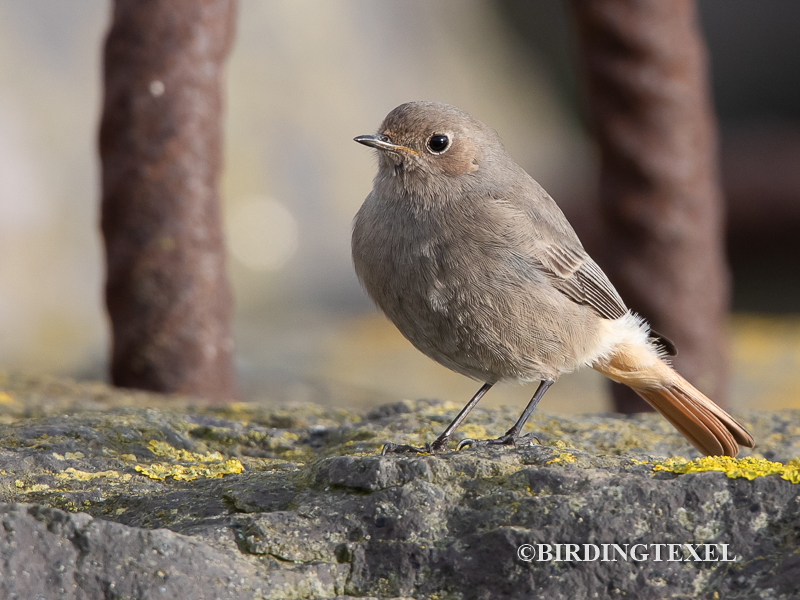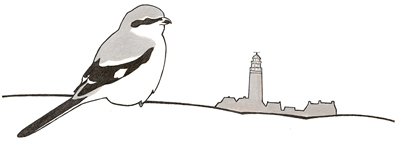Bewick's Swans usually arrive on Texel from mid-October. At the end of February most of them left for their breeding grounds in the arctic tundra of northern Siberia. Currently around one hundred and fifty birds are staying on the island. The maximum number of hibernators in recent years has been between one hundred and fifty and two hundred birds. Another species observed every winter is European Stonechat. This fairly rare breeding bird is mainly found in the dunes. The estimated number of hibernators is around ten. A very rare breeding bird and an even scarcer winter guest is Black Redstart. Sometimes a few birds are seen in a mild winter. Well-known places for this species are the harbor of Oudeschild and further south the NIOZ building.

Kleine Zwanen / Bewick's Swans Cygnus bewickii, first winter on the left, adult in the middle and a probably albino on the right, Texel, 21-12-2020

Roodborsttapuit / European Stonechat Saxicolu rubicola, Schorrenweg, Texel, 19-12-2020

Zwarte Roodstaart / Black Redstart Phoenicurus ochruros, Oudeschild, Texel, 24-12-2020


























